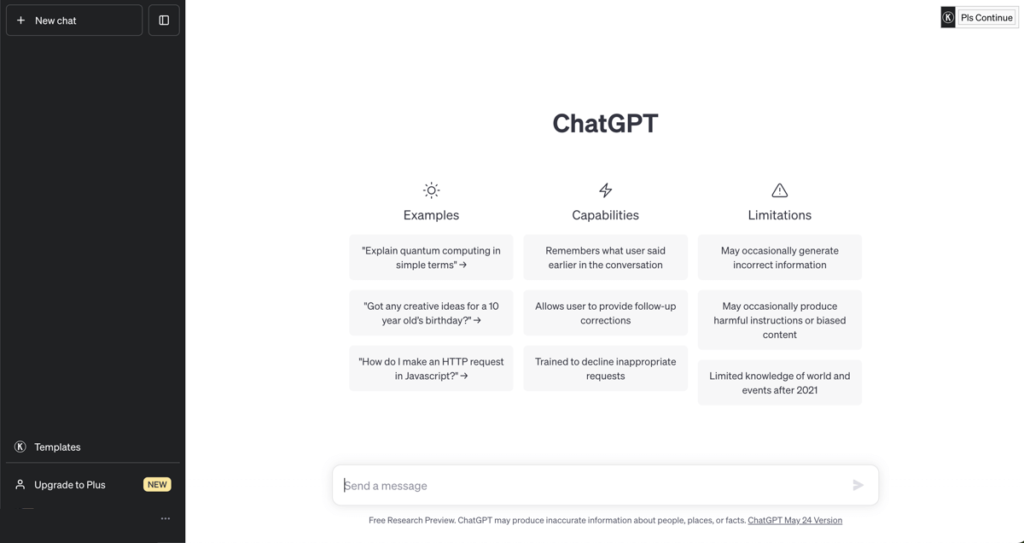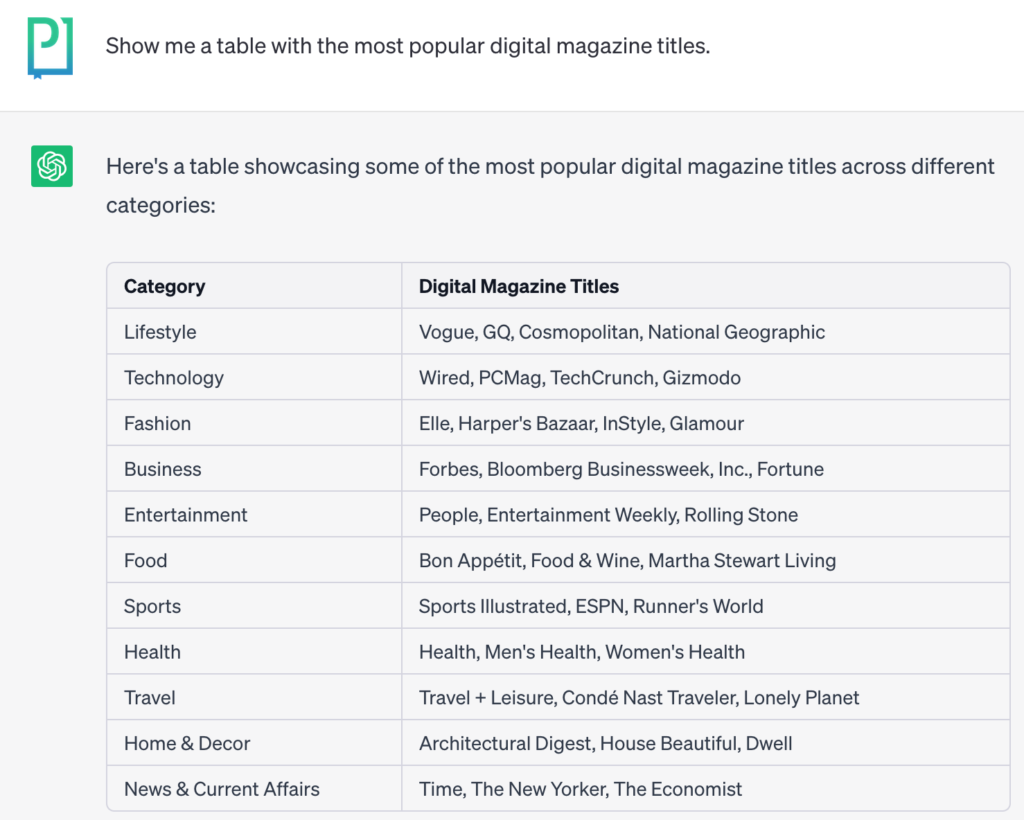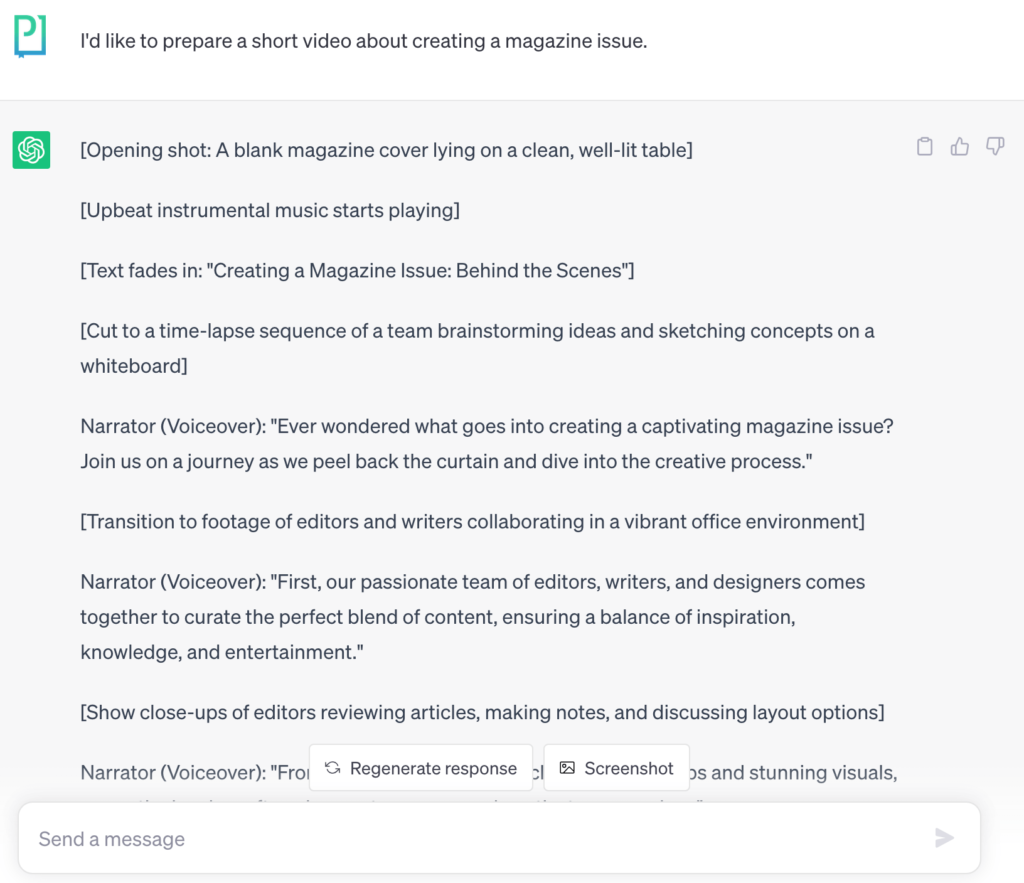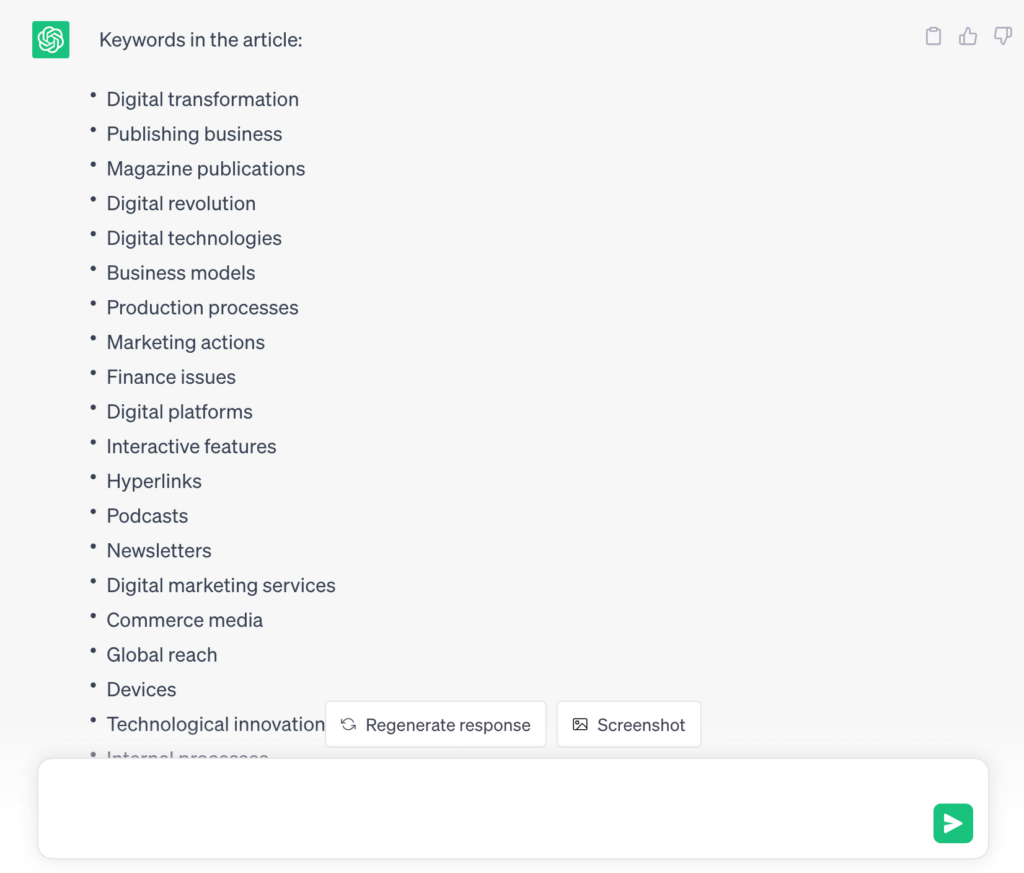The artificial intelligence (AI) chatbot called ChatGPT, which has taken the world by storm, increasingly boldly enters the publishing business. Although it’s not perfect and still needs a lot of improvement, we can already say that it has significant potential to drive the next revolution of the digital magazine world.
Along with announcing the release of the free version of ChatGPT, the public went on reconnaissance — to be more specific, 100 million users in just over two months since launch. People logged in to get answers to the most diverse questions that could pop into their heads. The Internet has been flooded with screenshots of these (sometimes ridiculous) dialogues. The result? Some said there was nothing to be fascinated with, others, on the contrary, that there is unlimited potential in this tool.
So, who is right?
Basically, both. The ChatGPT needs a lot of improvement and at this point, it is not able to fully replace full-time employees. However, it can help them a lot, especially if we are talking about magazine publishers.
What is this fuss all about?
If you have already used ChatGPT (even for fun and just because of curiosity), you know how it works: that the answers are schematic, that most of the content is simply generic, that there are questions it doesn’t answer at all and that… it is quite often wrong.
Why is that?
ChatGPT, named a bot, a tool, or an AI chatbot, uses natural language processing to create humanlike conversational dialogue. It is probably the easiest-to-use tool you can find on the Internet — you write a question, a comment, or anything you want and after a second it splits some answers out. This game is so fascinating and addictive, that once you start and send your first message, you fall into a few hours of discussion with Chat.

ChatGPT main dashboard
Business Insider called it a “chatbot that everyone is talking about”. We would add: “and you can talk about everything”.
The only thing is, you can talk about ALMOST everything.
And that’s because ChatGPT is not finished; its possibilities are limited. It is still being developed by specialists and constantly fed data, information, and instructions. Besides, the creators admit that they introduced ChatGPT to “get users’ feedback and learn about its strengths and weaknesses”.
The free version we see now is like the beginning and a teaser of what will await us in the future (and looking at the speed of technology development, this is about not too distant future).
Theoretically, ChatGPT can be used for activities such as:
- answer for questions you send to it,
- write different types of content (essays, emails, ad copy, etc.),
- summarize large bodies of text and data,
- understand the sentiment of a piece of text,
- coding and debugging,
- translation.
That’s why, together with the appearance of ChatGPT, there were concerns in the professions related to the above duties. Copywriters, translators, and programmers began to ask themselves one question — will AI replace me soon?
Again: “theoretically”. We used the same word a few lines above. We did it for a reason. ChatGPT’s abilities have to be strictly controlled, it needs to be supervised and so far, it doesn’t deserve 100% trust in the content it provides. However, under human control, it is quite a useful tool that can highly improve publishing processes.
Let’s take a closer look at fields in which it can be helpful.
Why is ChatGPT the great solution for magazine publishers?
ChatGPT can revolutionize the publishing company, even if it’s simply writing emails. Just think about it. Is there something more uncomfortable for dyslexic people, those who struggle with writing, or who might not be native English speakers, than writing a professional, long, and important work email?
Even if they don’t use the whole content created by AI, they may inspire themselves and figure something out on their own. That’s what’s most at stake here. Don’t expect ChatGPT to do the job for you, but remember that in the following areas, it can make the job significantly easier.
Content on any topic in seconds
To experience first-hand how ChatGPT handles content creation, we decided to ask for it. We requested to write a short article about home staging trends in 2023. Here is what we received.

Pretty nice, huh? Then, we asked for proposing a few titles describing this article.

Are you impressed? We were.
By using natural language processing and machine learning algorithms, ChatGPT can generate articles, features, and other content in minutes, freeing up your time and resources to focus on other aspects of your business.
We’ll leave it up to you to judge the quality and utility of the above fragments, but we think that these pieces provide some inspiration and a foundation for something bigger. What do you think? When we give a topic or keyword, the chatbot can suggest headlines, opening sentences, and even entire paragraphs for use in our written materials for websites, blogs, or social media.
Fair enough for the beginning.
Wide range of data analytics
Another useful feature of chat for publishers or article writers is data analysis. We all know manual data gathering is a time-consuming task. Chat helps with doing it more efficiently giving editors more resources in investigative articles, and high-end reporting.
The secret is, your questions don’t have to be a simple sentence, written order, or short instruction. You can put in a message field a table, a link, or a long fragment of content, data, or analysis instead. The same principle applies to answers. They can be a chart, a table, or any other form if it is asked for.
When we asked Chat to show us a table with the most popular digital magazine titles, it didn’t only display it but also assigned the titles to categories.

ChatGPT has been designed to process a large dataset and can list the data and provide details such as the number of rows in the dataset and the names of the columns along with the data they contain, as well as convert the dataset into another form.
How can a publisher take advantage of this?
By analyzing reader behavior and preferences, Chat GPT can provide insights into reader engagement, content preferences, and provide personalized recommendations for articles, and other content, which can obviously increase engagement and customer loyalty.
Chat GPT can help publishers with choosing the most effective subscription models for their digital publications. Again, with its ability to analyze reader behavior and preferences, it can help you optimize your subscription pricing and packaging to maximize revenue.
Really creative digital marketing
As we all perfectly know, success in digital marketing is based on well-drawn conclusions from data analysis (see point above). But in addition to this, a number of other promotional activities count both inbound and outbound marketing. With some of these, ChatGPT can be extremely useful and can help you with:
- writing content for social media channels,
- searching for hashtags,
- targeting email campaigns
- preparing ads,
- getting marketing tool recommendations,
- creating slogans
- preparing video scenarios
We tested the last point from the above list.
Look at what happened, when we simply sent: “I’d like to prepare a short video about creating a magazine issue.”

The above screenshot presents only the beginning of the scenario (if the Chat gets too “talkative” you can interrupt it at any time by clicking “stop generating”). Here, you can see a scenario for the video we want to prepare. In this case, ChatGPT figured also music, narrative, and side text in. Again: even if something in the proposed scenario doesn’t stick, you may find some inspiration inside and turn it into something special.
Different levels of SEO
Although the issue of SEO is part of marketing, we put it in a separate category, because the use of Chat in this matter is really outstanding. It may be helpful in:
- identifying, researching, and planning keywords,
- optimizing metadata,
- planning and building content around certain topics,
- creating a keyword list around search intent,
- generating, headlines, meta-titles, and descriptions,
- creating FAQs,
- providing a list of potential topics for your content strategy,
- checking spelling and grammar.
To check the possibilities Chat offers, we copied the content from our last article about the importance of digital transformation for magazine publishers and asked to find keywords in it. ChatGPT listed words and phrases that appear the most often.

You can already find tons of materials and courses on the Internet on how to use ChatGPT to improve your SEO strategy. At this point, it seems that this tool has great potential in this area.
It is better to be safe than sorry
In view of all the hype that has arisen around ChatGPT (one dreads to think what will happen when the next version is announced), we must say that it’s an incredibly powerful tool, but it’s not infallible. It simply gets wrong sometimes.
The funny thing is, it admitted that.

You need to keep this in mind, at least for now.
So, it’s time to ask what ChatGPT is: innocent fun, dangerous threat, or a useful tool?
If you want to form your own answer to this question, just go to chat.openai.com and spend some time with it by sending any question you think of. Then, be sure to share your thoughts with us! We can’t wait to see what you, as the publisher, think. Because we, as digital publishing solutions producers (and huge fans of new technologies) are truly fascinated by this tool and its future development.
In spite of what skeptics think, we believe that in good hands it is a solid tool for publishers helping with content creation, personalizing materials for targeted audiences, optimizing digital marketing efforts, developing effective subscription models, and providing valuable data analytics.
The rule on novelty is always the same, no matter if we talk about fire, electricity, Internet, or AI — use it wisely.

